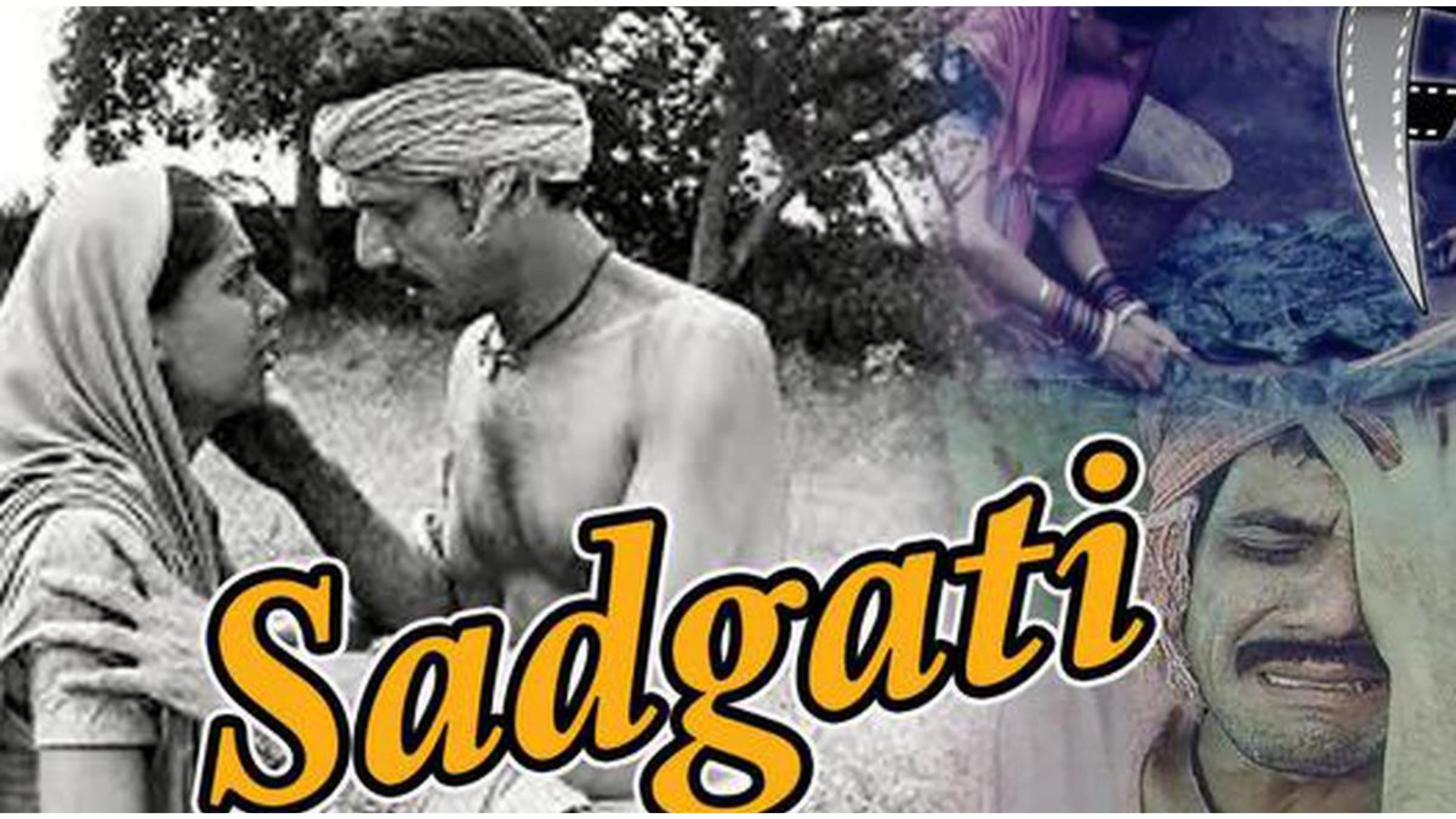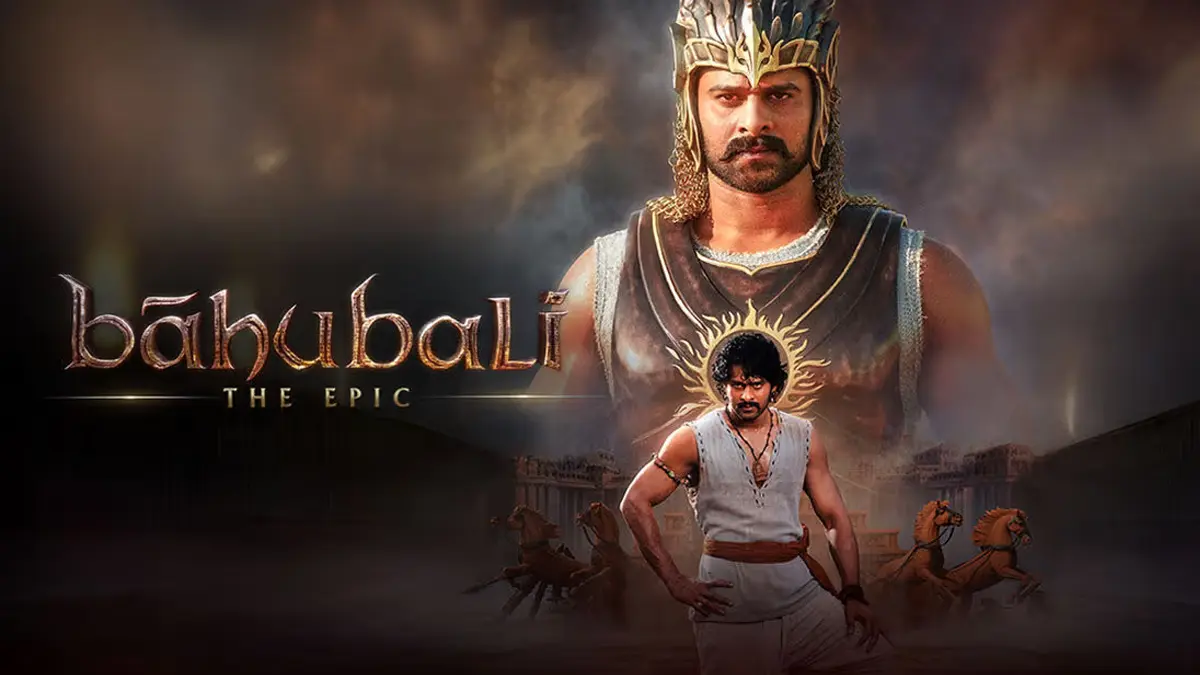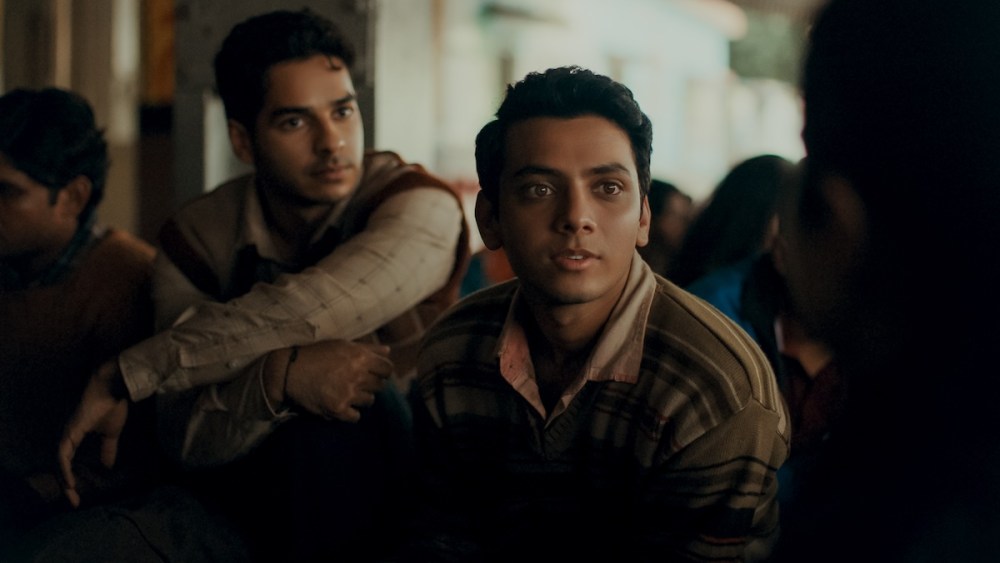“He is asking for fire now… you seem to have forgotten all about caste rules. Chamars, dhobis come walking in as though they own the house. You’d think this is an inn and not a decent Hindu’s house. Tell him to leave or I will scorch his face.”
The Brahmin pandit’s wife rebukes the priest when a Dalit worker, Dukhi, asks for fire to light his chillum. Played by Om Puri in the 1981 film Sadgati, Dukhi needs the priest to officiate his daughter’s wedding. Given the caste hierarchy, the Brahmin uses this as an excuse and demands various kinds of work to be done by Dukhi — sweeping the courtyard, transferring heavy sacks of husk to the godown, and chopping wood. Eventually, Dukhi dies of exhaustion, not being offered any food, water, or even remuneration for his day’s work. In the end, the priest had to give up his ‘purity’ as he had to dispose of the body of an ‘untouchable’ from his premises, only to dump the body at the cremation ground.
This Satyajit Ray film highlights how the caste system has been used as a mechanism to perpetuate the oppression against lower castes (particularly Dalits) by Brahmins and other forward caste groups. Following Manusmriti, Dalits are termed as ‘untouchables’, and are thereby relegated to the most inhumane, exploitative, ‘dirty’ and ‘polluting’ jobs like manual scavenging, midwifery, caretaking of cremation grounds, and other menial, physically taxing poorly remunerated work and bonded labour.
The Brahmin pandit’s wife rebukes the priest when a Dalit worker, Dukhi, asks for fire to light his chillum. Played by Om Puri in the 1981 film Sadgati, Dukhi needs the priest to officiate his daughter’s wedding. Given the caste hierarchy, the Brahmin uses this as an excuse and demands various kinds of work to be done by Dukhi — sweeping the courtyard, transferring heavy sacks of husk to the godown, and chopping wood. Eventually, Dukhi dies of exhaustion, not being offered any food, water, or even remuneration for his day’s work. In the end, the priest had to give up his ‘purity’ as he had to dispose of the body of an ‘untouchable’ from his premises, only to dump the body at the cremation ground.
Fast forward to the era of Netflix, in Neeraj Ghaywan directed Geeli Poochi; we see a Dalit woman Bharati Mondal played by Konkona Sen Sharma, operating heavy machinery as a factory worker. She has been eyeing the job of data operator, but on account of her caste, the job is offered to a married Brahmin woman even though Bharati possesses the requisite educational background for the same.
The film has been praised by a Dalit columnist in its portrayal of vulnerability, humiliation, and oppression faced by Dalits in the urban landscape. However, another Dalit columnist has brought to light the flaws of the film: “But the story couldn’t get away from the age-old trope of convincing the audience that marginalised people have to be exceptional to achieve their heart’s desire….. If you are marginalised your over-achievements are the only marker of your credibility.”
Fast forward to the era of Netflix, in Neeraj Ghaywan directed Geeli Poochi; we see a Dalit woman Bharati Mondal played by Konkona Sen Sharma, operating heavy machinery as a factory worker. She has been eyeing the job of data operator, but on account of her caste, the job is offered to a married Brahmin woman even though Bharati possesses the requisite educational background for the same.
The two films play an important role in the understanding of caste and its evolution over time. Sadgati situates the caste system historically, where the Dalit worker faces explicit discrimination and oppression on the basis of his caste and class position. While often thought of as a relic of the past or a rural phenomenon, Geeli Poochi talks about the modern urban aspects of caste. This includes not only discrimination in the labour market but also in other spheres of life.
A study by Gayatri Singh, Trina Vithayathil and Kanhu Charan Pradhan shows that 60 per cent of cities in India are segregated residentially with respect to caste/tribe. In fact, in the states of Maharashtra and Gujarat, 34 per cent and 29 per cent of cities experienced an increase in residential segregation between 2001 and 2011.
Looking at the labour market, scholars Madheswaran and Attewell analyse the urban labour market and find that there exists discrimination in both public and private sectors, with discrimination being higher in the latter; substantial wage discrimination between Scheduled Castes/Scheduled Tribes and Upper Caste such that the former earns 15 per cent lower wages than the latter; and, occupational discrimination being considerably more important than wage discrimination.
The two films, however, end differently. Dukhi is helpless throughout the film in the face of the tyranny of the priest. He apologises for entering the priest’s house and is even hesitant to ask for food in exchange for all the work he performs for the priest in Sadgati. Eventually, he falls to his death the same way he led his life: working for the priest. Even in his death, he was a cause of annoyance to the Brahmins. One of the Brahmin’s comments about Dukhi’s death, “Until the corpse is removed, we cannot go to the well. How long can we go without water?“
Furthermore, National Sample Survey (NSS) data 2011-12 show that 61 per cent, 1.24 per cent and 37 per cent of physicists and chemists are Upper Caste Hindus, Scheduled Castes, and Others (Scheduled Tribes/Muslims/Christians/other minority religions) respectively. Similar figures stand for computer professionals. On the other hand, while Upper Castes and Others comprise only 6.66 per cent and 33 per cent of shoe cleaners, respectively, Scheduled Castes constitute 59 per cent.
The ‘dirty’ jobs that Dalits did in the past, as shown in Sadgati, have reproduced over time. With generations of oppression faced by Dalits like Dukhi, they have been deprived of the necessary capital needed for upward mobility. Thus, in the modern urban labour market, the occupation choices for Dalits are restricted, and they are overrepresented in unskilled jobs.
The job of manual scavenging, for example, is one of the many caste-based occupations which has persisted due to its “impure” nature. It is done exclusively by Dalits even today; about 99 per cent (1.3 million) of manual scavengers are Dalits, of which 95 per cent are women. This points to how the occupational segregation based on caste has reproduced over time, and even in places where we believe that caste discrimination does not exist, it manifests in ways faced by Bharati Mandal.
Although the caste system and discrimination are far from over in India, it is important to recognise that getting rid of explicit discrimination based on the caste system is not enough to make a fair society. It would, rather, be a caste-blind society. The historical disadvantage that Dalits have faced through generations will not go away with only a few years of modern practices. Although affirmative action has helped Scheduled Castes gain some mobility, the historical disadvantage has placed them in a position where they are not able to compete with Upper Castes, who are armed with all their privileges.
Dukhi’s life of direct exploitation has wrapped itself in the mask of modernity, but the deprivation based on traditional caste very much exists in the labour market.
“Even if you learn all that you still won’t get that job. Because you are Bharati Mandal. You’re not a Banerjee, a Mishra or a Sharma. We are Dalits. Did you forget that for a moment? They will allow us to eat at a table, but won’t let us work on one. Don’t fight for what can’t be yours, or they will burn you up in flames,” her co-worker reminds her of her last name, an indicator of her caste attached to her throughout her life. The perception of privileged castes has, in fact, become more subtle. While Dukhi was explicitly shooed away from the priest’s house, Bharati was called upon in a birthday celebration in her office, only to first cut and serve the formal workers and then distribute it among her co-workers in the factory.
The two films, however, end differently. Dukhi is helpless throughout the film in the face of the tyranny of the priest. He apologises for entering the priest’s house and is even hesitant to ask for food in exchange for all the work he performs for the priest in Sadgati. Eventually, he falls to his death the same way he led his life: working for the priest. Even in his death, he was a cause of annoyance to the Brahmins. One of the Brahmin’s comments about Dukhi’s death, “Until the corpse is removed, we cannot go to the well. How long can we go without water?“
Also read: Geeli Pucchi: Exploring The Messiness Of Caste And Sexuality
Geeli Poochi, however, shows that the Dalit worker is no longer a docile shock absorber. The rebellion in the eyes of Bharati Mandal was evident in different times of the films. Eventually, she had to fight and get the job she deserved.
Also read: Film Review: Juice, A Cold, Sour Look At Male Entitlement In Our Houses
Annesha Mukherjee is a PhD Scholar at the Centre for Development Studies, Kerala. Satyaki Dasgupta is a PhD student at Colorado State University.
Featured image source: The Hindu





